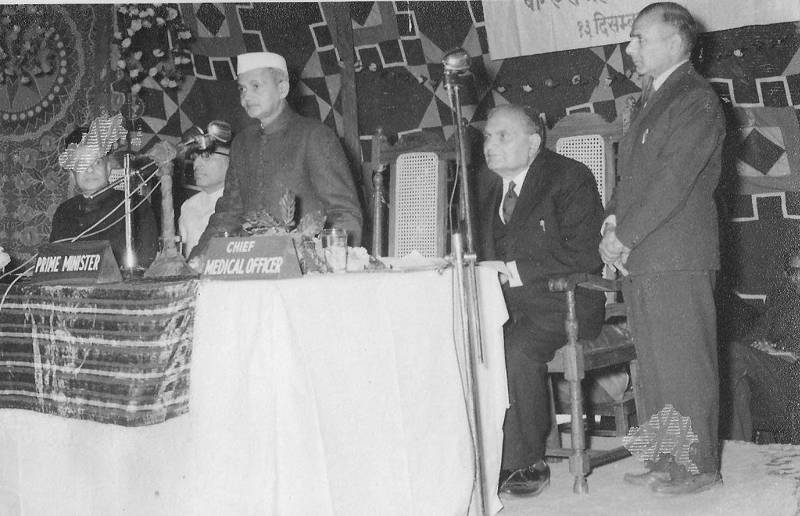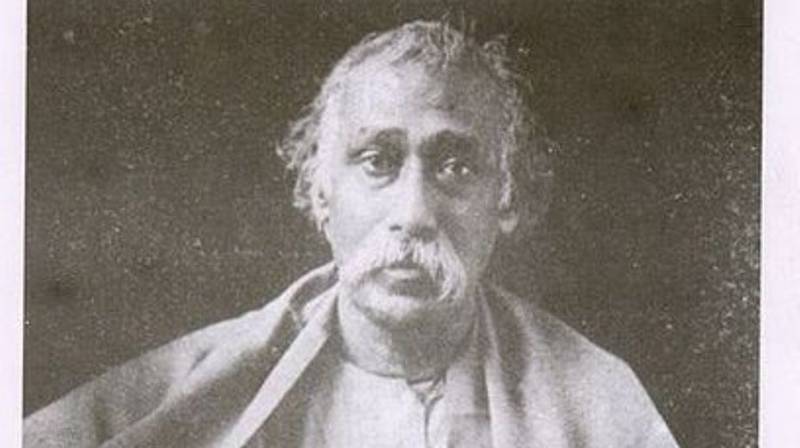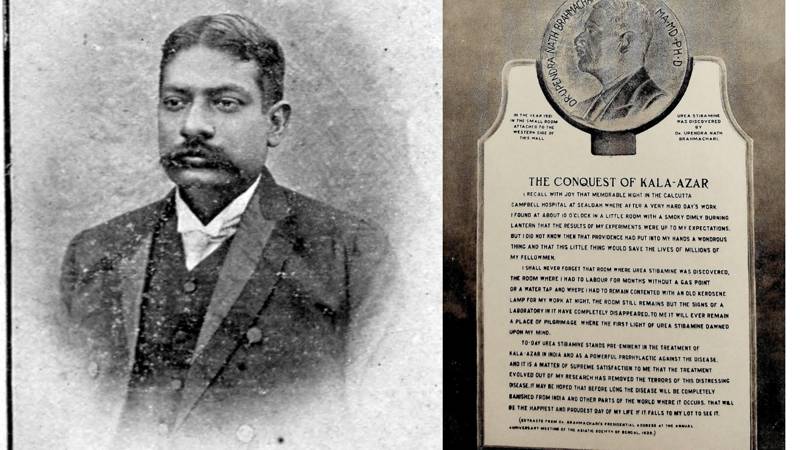“Few Indians have done more to further medical research in India than Sir Upendranath (Brahmachari). His success with urea stibamine was an example and encouragement not only to medical research workers and research chemists, but also to the chemical industry in India, which in the last two decades has made enormous strides.” These words were written by Dr. L. Everard Napier, an authority on Tropical Medicine, in the Nature (a reputed scientific journal).
Who was Dr. Upendra Nath Brahmachari?
Upendra Nath (or, Upendranath) Brahmachari was born in 1875 at Jamalpur (in Bihar). His father, Dr. Nilmony Brahmachari, served in the railways as a doctor and has seen the medical profession from close quarters at home as a child. Brahmachari passed B.A from Hooghly College in 1893 with Honours in Mathematics and Chemistry both. He received a medal in mathematics. A year later he received a Master’s degree in Chemistry from Presidency College. He went on to obtain a Licentiate of Medical Practice, M.B (equivalent to present M.B.B.S), M.D in 1902 and PhD in physiology in 1904. The PhD thesis titled Studies in Haemolysis is considered an important piece of work on physiological and physiochemical properties of the Red Blood Cells.
Why Kala-Azar?
Brahmachari joined the Medical Services in 1899 and later Campbell Medical School (now renamed as Nil Ratan Sarkar Medical College and Hospital) in 1905. It was in those days that his attention drew towards Kala-Azar (Black Fever). Napier writes, “Not inappropriately, Brahmachari's main interest was kala-azar. He was a Bengali, and in his early days of practice this disease was probably killing an average of at least 100,000 of his countrymen each year. There was at that time no specific treatment, and a 95 percent death-rate was claimed for the disease."
What is Kala-Azar?
The disease Kala-azar (Visceral leishmaniasis) was described by William Leishman and Charles Donovan in 1903. Kala-azar is also known as Leishman-Donovan infection. Kala-azar is an infectious disease of South Asian and Mediterranean countries. The protozoan parasite that causes the disease is called Leishmania donovani. The disease is transmitted by sand flies and it is characterised by an enlarged spleen and liver, irregular fever, anemia etc. Though various forms of treatment were in vogue, they did not help to reduce the death rate.
What was Brahmachari’s discovery?
Physicians across the world were using the intravenous administration of tartar emetic (potassium salt of antimonyl tartrate) to cure Kala-Azar around 1915 only to find that it could cause cardiac and hepatic dysfunctions. Brahmachari introduced sodium salt of antimonyl tartrate instead of the potassium salt in a hope to avoid the depressant action of potassium. The results initially were better but still the medication had serious disadvantages.
In 1919 with a grant from Indian Research Fund Association Brahmachari started his research in an ill equipped room at the Campbell Medical School. Within a year he was able to synthesise a new potent compound against Kala-azar named urea stibamine – the urea salt of para-amino phenyl stibnic acid . Saha P, Chaudhury A and Maji AK write in their article, Sir U.N. Brahmachari and his battle against Kala-Azar, “Using urea stibamine, Kala-azar mortality rate could be brought down to 10% by 1925 and it had a cure rate of 95%. This drug was used for the treatment of Kala-azar not only in India but also in Greece, France, and China for many years.”
Brahmachari later wrote, ““I recall with joy that memorable night in the Calcutta Campbell Hospital at Sealdah where after a very hard day's work I found at about 10 o'clock in a little room with a smoky dimly burning lantern that the results of my experiments were up to my expectations. But I did not know then that providence had put into my hands a wondrous thing and that this little thing would save the lives of millions of fellowmen. I shall never forget that room where Urea Stibamine was discovered. The room where I had to labour for months without a gas point or a water tap and where I had to remain contented with a old kerosene lamp for my work at night. The room still remains but the signs of a laboratory in it have completely disappeared. To me it will ever remain a place of pilgrimage where the first light of Urea Stibamine dawned upon my mind”
Nobel Prize Nomination & other recognitions
Brahmachari received six nominations to the Nobel Prize in Physiology or Medicine for this discovery. He was also conferred with a knighthood for his research work.
In 1932, the Chairman of the Indian Kala-azar Commission Col. H. E. Shortt stated on the discovery by Brahmachari, “it was a dramatic success, overnight, a death rate of 90% was transformed into a cure rate of 90%.”
Brahmachari worked on other diseases like Malaria, Black- Water Fever, Cerebrospinal Meningitis, Diabetes, Filariasis, Influenza, Leprosy, and Syphilis. He published about 150 research papers. Brahmachari was the first to discover the presence of Qurtartan Fever in Kolkata and Dhaka. This disease was considered to be very rare. Crombie, the President of the Indian Medical Congress (1894) stated in his Presidential Address that he had met only one case in his whole experience in India. Brahmachari, after a most exhaustive and critical survey of the vast literature on the Old Burdwan Fever, concluded that the disease was a combination of two diseases namely malaria and Kala-azar.


insideNainiCentralPrison.jpg)



.jpg)
.jpg)